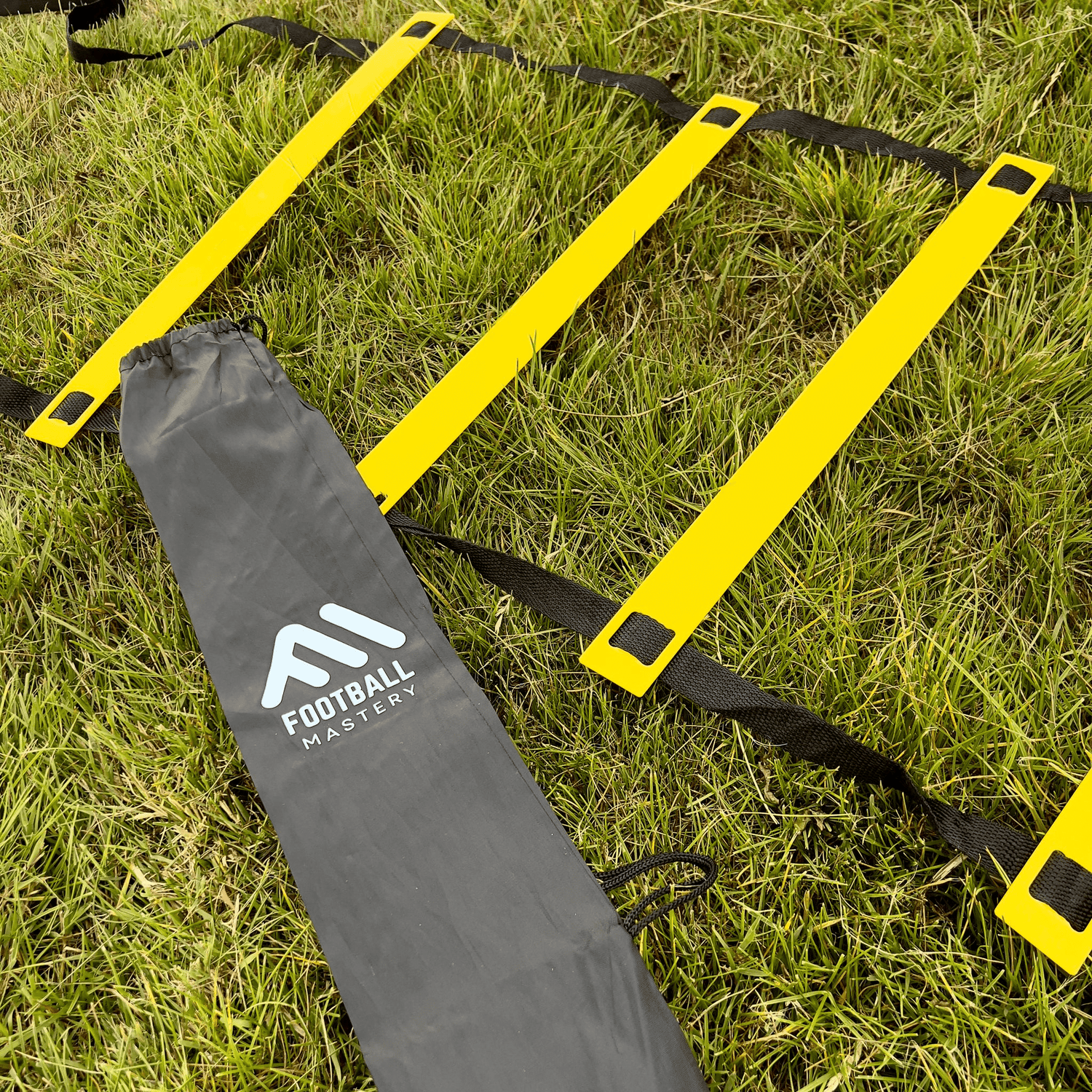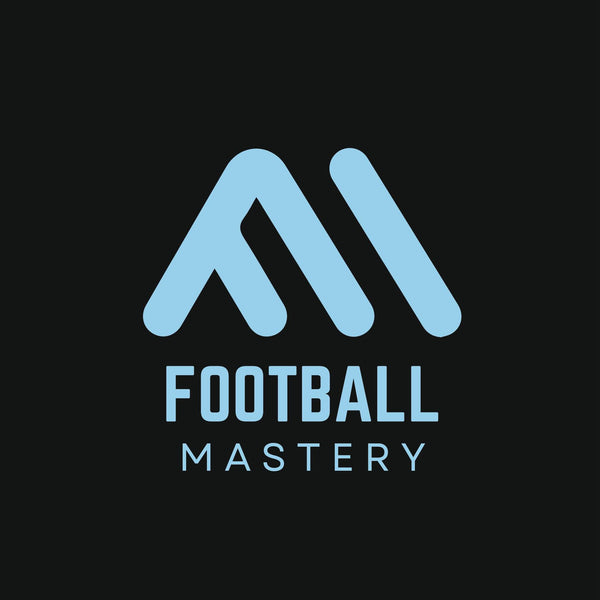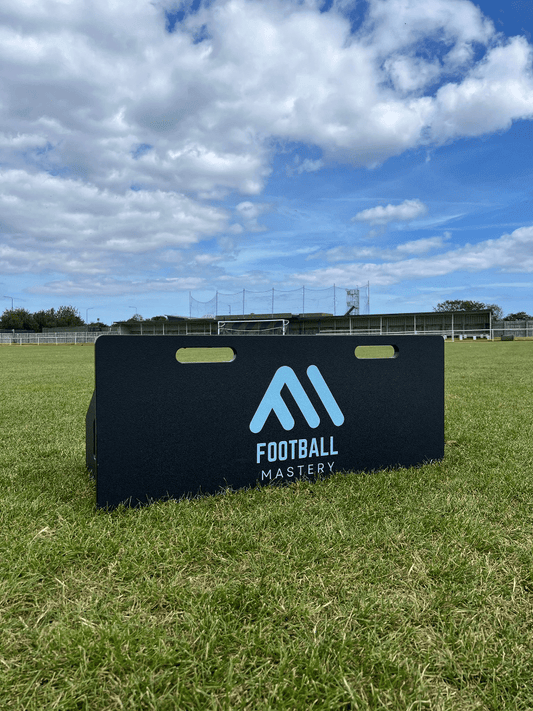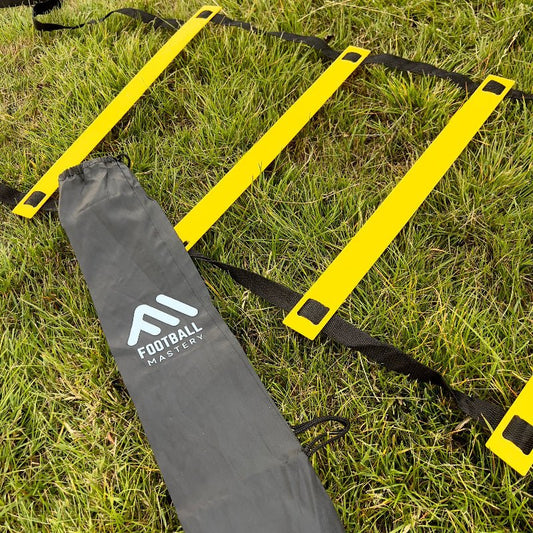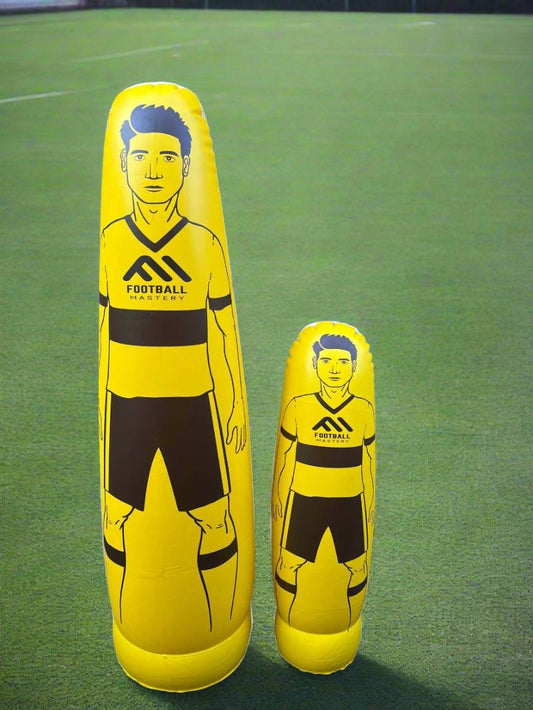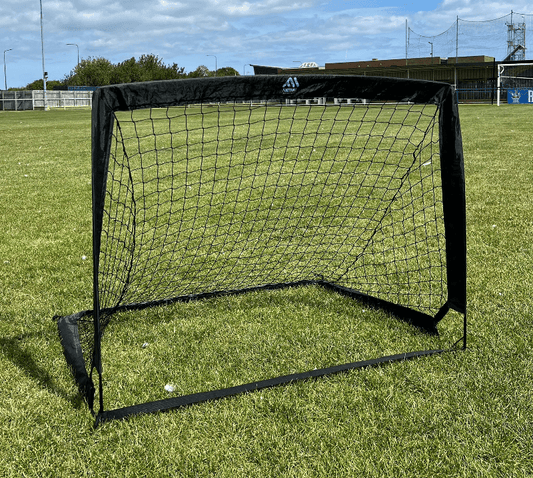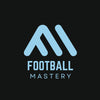
Affordable Football Rebound Boards That Don’t Compromise
Share
If you're searching for football training equipment that offers reliable performance, long-term durability, and a price tag that doesn’t sting, this article will walk you through the best options on the market for rebound boards — particularly focusing on affordability without compromise. We explore why rebound boards are essential for solo training and goalkeeper drills, what features separate the best from the rest (like rebound speed, adjustable angles, and impact-resistant materials), and we highlight cost-effective options built to last. We'll also point you toward top-quality boards from Football Mastery — a UK-based specialist brand making waves in training gear.
The Rebound Board Reinvented for Modern Training
There was a time when training solo meant kicking a ball against a wall and hoping for a decent return. But walls chip, balls scuff, and your neighbour's window was never part of the plan.
Enter the rebound board — a compact, portable piece of training equipment that turns limited space into a personal training ground. Designed for ball return and repeatable drills, modern rebounders have evolved into sophisticated tools for all levels of the game — from youth training to elite performance environments.
“With the right rebounder, one player becomes a full team. It's the silent coach, the reliable teammate, and the ultimate test of touch.”
Unlike traditional football rebounders made with netting, solid-surface rebound boards provide faster return speeds and realistic ball trajectories, mimicking the sharpness of a live game. That's why they're fast becoming the go-to choice for those looking to refine their first touch, passing accuracy, and reaction times — all without relying on others.
Why Affordable Doesn’t Mean Low-Quality
At Football Mastery, affordability doesn’t come at the cost of quality. Their rebound boards collection is engineered with impact-resistant materials, compact design, and surface compatibility, giving players access to equipment that feels professional — without paying Premier League prices.
Here’s what sets an affordable rebound board apart:
-
Durability: Built using materials like polypropylene or composite plastic to withstand repeated impact.
-
Portability: Designed to be foldable or lightweight for easy transport between the garden, training pitch, or schoolyard.
-
Adjustability: Many boards now include adjustable angles, allowing varied rebounds for realistic match scenarios.
-
Low-maintenance: No cables, no netting, and no repairs every time it rains.
A great example is Football Mastery’s flagship Rebound Board, which balances no-compromise performance with rugged design. It’s simple, sharp, and built for repetition — exactly what you want for technical development.
Multi-Surface Use & Real-Game Scenarios
Whether you’re laying down cones on a 3G surface or practising in the back garden, rebound boards designed with multi-surface use offer a massive advantage. They won’t slip, collapse, or buckle under pressure. That means consistent feedback, whatever the weather or terrain.
Key training applications include:
-
Solo training: Perfect for those days when teammates are unavailable.
-
Goalkeeper training: When you need high-velocity rebounds or awkward deflections to sharpen reactions.
-
Small group drills: For passing circuits or warm-ups that simulate game flow.
Coaches also favour these boards for creating controlled, repetitive environments where ball control and reaction training are the focus. And for space-conscious environments? The flat-pack storage design is a game-changer.
Built for Budgets: Bundle Options Worth Considering
For those equipping a team or club setup — or simply looking to maximise training with a smart investment — Football Mastery’s training bundles offer curated kits that combine football rebounders, cones, and more into ready-to-go packages. These are ideal for schools, academies, or parents who want a quick win.
Material Matters: Fibreglass vs. Plastic Rebound Boards
When it comes to rebound speed and longevity, the material your board is made from makes a huge difference. Two of the most common types are plastic composite and fibreglass — both offering distinct pros and cons depending on your training needs.
Fibreglass Rebound Boards
-
Pros:
-
Exceptional rebound velocity — mimics live match conditions
-
Heavy-duty build — perfect for elite/pro-level training
-
Excellent resistance to wear and tear
-
-
Cons:
-
Heavier, less portable
-
Higher cost — sometimes upwards of £400
-
Plastic Composite Rebound Boards
-
Pros:
-
Lightweight and portable
-
More cost-effective
-
Easier to store or move between sessions
-
-
Cons:
-
Slightly less consistent ball return compared to fibreglass
-
May not offer the same lifespan under intense daily use
-
If you're training frequently at home or in a junior team environment, a plastic rebound board offers excellent value — especially models like the one featured in the Football Mastery rebounder range. For clubs or academies seeking coach-recommended gear with high performance and rugged build, fibreglass options are worth the higher upfront investment.
Tip: When choosing between materials, ask yourself: “Do I need portability or professional-grade consistency?” That one question will usually guide your choice.
Price vs. Quality: How to Spot Real Value
While many assume that “affordable” equals “flimsy”, the modern training gear market tells a different story. Here's what to look for when weighing price vs. quality in football rebound boards:
What Adds Value:
-
Thick, rigid build — stays stable on impact
-
Multi-surface rubber grips — allows use on grass, astro, or tarmac
-
Weatherproofing — no rust, swelling, or cracking after rain
-
Fold-away design — ideal for storage and travel
-
Angled face or adjustable legs — varies ball return for more dynamic drills
What’s Not Worth Paying For:
-
Overcomplicated assembly
-
Bulky boards without portability
-
Flimsy rebound nets that degrade quickly
-
Gimmicky designs not aligned with real training needs
The Football Mastery product range ticks many of these boxes — compact, tough, and engineered for actual players (not just showroom shelves). Their direct-to-player model keeps costs low and performance high.
DIY Rebound Boards: Worth the Hassle?
It's a fair question. Can you make your own DIY rebound board?
Technically, yes. Many players have tried building one using scrap plywood and high-density rubber, as noted in community groups. While this can be a budget-friendly route, there are trade-offs:
Pros:
-
Extremely low upfront cost
-
Custom sizes and angles
Cons:
-
Requires tools, time, and skill
-
Inconsistent rebound quality
-
No portability
-
Not weatherproof unless sealed
For those with workshop access and a flair for DIY, it’s a viable option. But if you're after low-maintenance, reliable results, a professionally designed board from a brand like Football Mastery often works out better in the long run.
You can explore their ready-to-train rebound board model here — it's designed to withstand daily use without the DIY headaches.
Getting the Most From Your Rebound Board: Solo & Keeper Drills
Once you’ve chosen a quality rebound board, the next step is getting maximum value from your training sessions. These boards are more than just tools — they’re training partners designed to develop sharpness, awareness, and control.
🔄 Solo Training: Small Space, Big Gains
If you're working alone in the garden or at the park, the rebound board becomes your teammate. Try integrating drills like:
-
One-touch passing: Stand 2–4 metres away and fire rapid passes, focusing on clean contact and consistent technique.
-
First-touch control: Allow the ball to rebound and trap it with your laces, sole, or thigh.
-
Turning drills: Receive the rebound, turn sharply with the ball, and deliver another pass.
-
Footwork circuits: Combine cone movements with passing against the board for aerobic + technical conditioning.
Many of these drills can be enhanced by using Football Mastery bundles, which combine cones, resistance bands, and a rebound board for a well-rounded solo session.
🧤 Goalkeeper Training: Sharpen Reflexes Without a Shooter
Goalkeeper training without a full squad can be difficult, but rebound boards fill the gap.
Try these effective keeper drills:
-
Reaction saves: Use angled rebounds to simulate deflected shots or quick low saves.
-
Diving drills: Bounce the ball off the board from close range and dive across your line.
-
Footwork and distribution: Rebound passes to work on one-touch clearances or long throws.
Using a board for keeper-specific work allows you to recreate real match moments on demand — without needing a coach to deliver the perfect strike.
The Youth Advantage: Early Touch Training
For junior players, few tools match the return on investment of a good rebounder. At an early age, repetition and rhythm are crucial — and the board enables:
-
Confidence building through constant ball contact
-
Skill isolation, like trapping or short passing
-
Self-coaching, encouraging creative training habits
-
Parent-friendly training, even when no one else is available
Football Mastery’s boards are built to suit a wide range of ages, making them ideal for youth training environments — from weekend kickabouts to academy setups.
“A rebound board isn’t just gear. It’s a development accelerator. Every rebound is another chance to get better.”
Mistakes to Avoid When Buying or Using a Rebound Board
Even a great board can become a poor investment if misused. Avoid these common pitfalls:
❌ Choosing Based on Looks, Not Function
Focus on sturdy design and proven features over flashy colours or gimmicks.
❌ Ignoring Surface Compatibility
Some boards won’t hold on artificial turf or hard floors. Always look for multi-surface compatibility.
❌ Overpaying for Underperforming Boards
Avoid generic imports with inflated price tags. Opt for specialist products like those from Football Mastery, built specifically for footballers.
❌ Neglecting Storage Requirements
If space is tight, prioritise boards with flat-pack storage or foldable features.
❌ Lack of Progression
Use the board regularly, and vary drills. Add movement, reaction challenges, and even introduce game constraints for realism.
Final Whistle: Should You Invest in a Rebound Board?
If you’re serious about improving your game — whether you're a player, coach, or parent — then the answer is yes.
The ideal rebound board isn’t just affordable — it’s durable, functional, and built to help you train smarter, not harder. Whether you're refining your touch in the garden or preparing keepers for their next matchday, a high-quality board makes that process more efficient.
With brands like Football Mastery creating boards that balance performance and price, it’s never been easier to get your hands on a tool that works as hard as you do.
Check out their full lineup right here.
FAQ: Affordable Football Rebound Boards That Don’t Compromise
1. Are rebound boards suitable for both indoor and outdoor use?
Yes — many modern rebound boards, including those from Football Mastery, are built for multi-surface use, meaning they’re safe for grass, astro turf, gym floors, or concrete. Always check that the model includes non-slip rubber pads or a wide enough base to prevent movement on smoother surfaces.
2. What age group can use a rebound board effectively?
Rebound boards are effective for a wide range of age groups, from junior players (6+) to adults. They are especially beneficial for youth players developing ball control and technique, while older players use them for technical refinement and fitness-based drills.
3. Can a rebound board help with passing accuracy?
Absolutely. The predictable and repeatable nature of ball return makes rebound boards ideal for working on both short and long passing. They can be integrated into target passing drills, wall passes, and even volleying exercises.
4. How much space do I need to use a rebound board properly?
You don’t need much. A flat surface area of 3–5 metres in front of the board is usually sufficient for most drills. For more dynamic training (e.g., running or volley drills), a slightly larger area is ideal — like a garden, small pitch, or training square.
5. How do rebound boards compare to net-style rebounders?
Board-style rebounders offer faster rebound speed, a more predictable bounce, and are generally more compact and weather-resistant. Net-style rebounders may offer more forgiveness for beginner players but tend to lack the durability and sharpness required for advanced drills.
6. Can I use a rebound board for team training sessions?
Yes. Rebound boards are perfect for small-sided games, passing circuits, warm-up routines, and technical stations within team training. Coaches often use multiple boards in stations or rotate players through rebounder drills.
7. What’s the difference between a flat rebound board and one with an angled face?
A flat board offers a straight return and is great for close control and passing. An angled board returns the ball at varying heights, making it suitable for volleys, first touches, and goalkeeper drills. Some models, like those in the Football Mastery range, are designed with adjustable angles for more versatility.
8. Do rebound boards require any setup or tools?
Most high-quality rebound boards are pre-assembled or require minimal setup. They often fold or unfold easily and don’t need any tools. That’s one of the advantages over net-style rebounders, which can be fiddly and time-consuming to put together.
9. How do I maintain a rebound board?
Rebound boards are generally low-maintenance. Wipe down dirt and moisture after use, and avoid leaving them outdoors for prolonged periods if the board isn't weather-sealed. Store in a dry place when not in use to preserve material integrity and grip.
10. Are rebound boards safe for children to use unsupervised?
While rebound boards are safe in general, younger players should always be supervised, especially when using heavier boards or performing more advanced drills. It's best to start with basic passing and control drills until the child becomes confident and familiar with the rebound dynamics.
